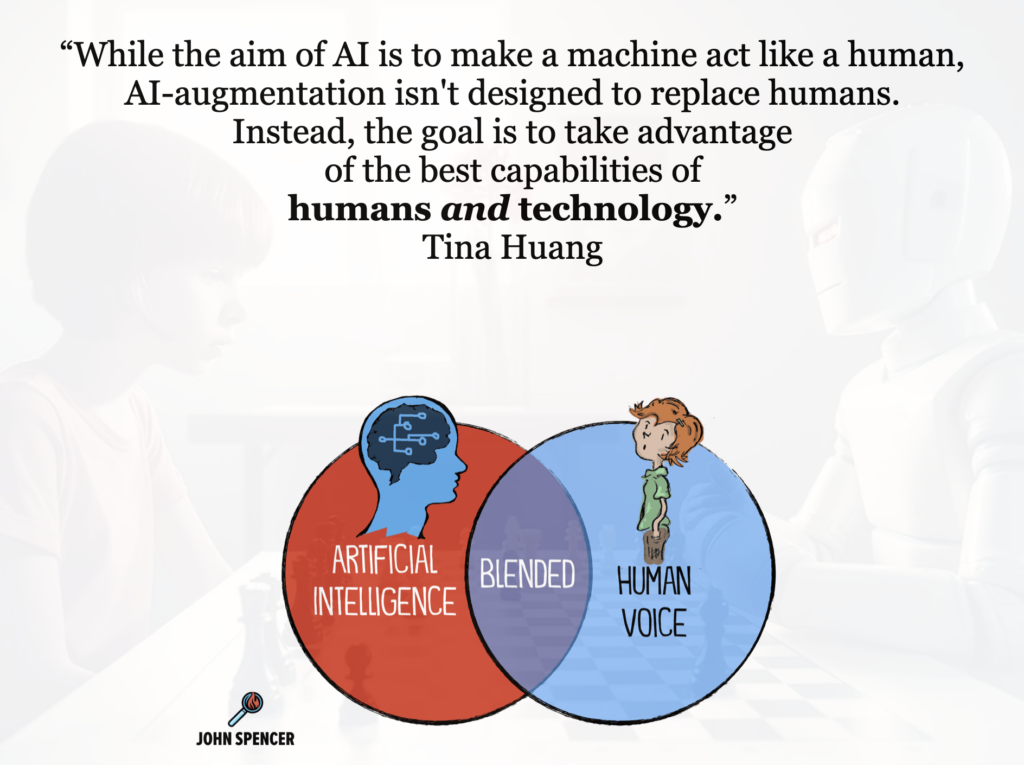If you are anywhere near my age, there was a time when Google wasn’t a thing. We are so used to using it that we often don’t think about when it wasn’t readily available.
“Googling” something was a habit that was developed, even when we had access to it right in front of us.
At times early in my teaching career (starting in 1999, which wasn’t as much of a party as Prince promised!), significant world events would happen, and instead of going to a search engine, I would head down to the school library to gather information from the television (yes, the television on the cart).

That wouldn’t happen today. We would intuitively go to our devices and often go to our social site of choice.
This is currently happening in many ways with AI and things like ChatGPT. Is using that really hard? Not at all. The struggle is getting into the habit.
As I was preparing to lead a workshop on AI and some of the opportunities and obstacles for its use in learning, leadership, and teaching (in that order, which matters), the event organizer asked participants what they would like to learn about in a Google form. I was anxious to see what the question would be.
When I received the results, I did what I would innately do. I started to read each result, one by one, to think about how we could shape the workshop.
Then I thought, “Why wouldn’t I use AI to help me with this and then model the process?”
So, I copied and pasted the results and asked ChatGPT to summarize them into three major points. Then, I asked it to summarize those points into questions I could answer. Once I received those questions, I started putting my presentation together.
You can see the entire process in the video below:
I did ask for answers to each of the questions, but I also wanted to contribute my own input and experience. You can also see the entire results of my query and the answers here.
What would have taken me a significant amount of time to do was literally done in 60 seconds (although the video is sped up above 2x, but still!).
A few things I thought of while going through this process.
- Although it was easy enough to have ChatGPT summarize the results into themes, I did take a quick scan myself to see if there was anything I needed to address specifically that might not have been captured in the overall summary. There is a difference between utilizing the technology and unquestioningly trusting the results. I am nowhere near the latter, but I see how this could be such a time-saving process that I could spend more time providing solutions. This leads to the next takeaway.
- I read this excellent piece by John Spencer titled “When Should Students Use Artificial Intelligence? Seven Keys to Consider.” He shared findings on how humans can’t beat AI in chess, but humans plus AI can beat AI. It led me to the Forbes article and the quote from Tina Huang below, along with Spencer’s complimentary image.

In creating my own presentation, I used AI, but I also brought my experience and ideas to the table. If done correctly, combining these things can create a more human-centered experience.
- I captured this process in the video shared so that people can see that I am still learning about the process myself. The hope is that educators will learn not only from my ideas but also from my example and ask the question, “In what way could I do something similar in my own context?” As I mentioned before, before we “teach” this, we have to learn about it and then lead by example. That is the best way to help others to see the possibilities.
Some of you reading this might think that what I shared is an obvious strategy for using AI. Others might have never considered using the technology in this way. I write about all of this not because I think the technology is too complicated to use but because I am trying to get into the habit of asking myself, “How can AI help me find a better way forward?”
Writing about the process will make it more likely that the habit sticks. AI can’t make the habit for me.